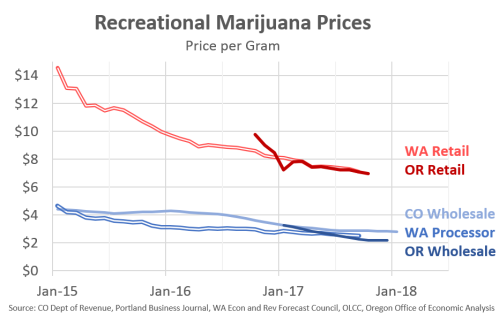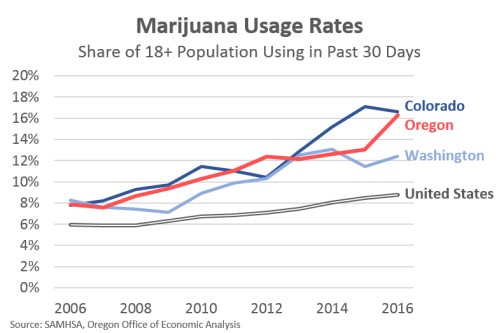Rent control is back on the public policy agenda, at least in California, where
Proposition 10 on the November ballot "Expands Local Governments’ Authority to Enact Rent Control on Residential Property." Hence some thoughts about rent control in general, and a couple of the more recent studies on the topic.
Some thoughts:
1) Rent control is typically justified by pointing to low-income people who have difficulty paying the market rents. I'm sympathetic to this groups, and favor various policies like income support and rent vouchers to help them. But as I have argued in other contexts,
invoking poverty and necessity as the basis for rent control is a ruse. The poor are not helped in any direct way by controlling rental prices for all income groups, including the rich and the the middle-class.
One response I have heard to this argument is that if rent control only applied to those with low-incomes, there would be an incentive to avoid renting to those with low incomes and not to build any more low-income housing. Of course, this argument is of course an admission that rent control discourages the growth and maintenance of rental properties. Expanding rent control to cover all income groups will expand those negative incentives to the entire rental housing stock, rather than just part of it.
2) Many of those who favor rent control also favor higher minimum wages. Thus, it is useful to remember that rent control is fundamentally different from minimum wage rules, because prices for physical objects like buildings are fundamentally different from wages paid to workers. When the price of an hour of work changes, workers can have higher or lower incentives, or higher or lower morale, or can search more or less for jobs, or consider different kinds of jobs, or look for jobs in other jurisdictions or in the underground economy, or even withdraw from the labor market. Buildings are not flexible in these ways, and so the implications of rent control are easier to predict with confidence than the implications of minimum wage laws.
3) Before you own a house, there can be a tendency (which I certainly had) to think of the housing stock as immutable, rather like the pyramids. When you own a house, you instead come to think of it as a large machine that requires continual maintenance on all its separate parts. Many arguments in favor of rent control implicitly view the housing stock like the pyramids, and underestimate both the short-run costs of maintenance and repair and the longer-run costs of property upgrades and new construction.
4) Rent control offers a tradeoff between present benefits for one group and future costs for another. The present benefits go to those already living in apartments that are rent-controlled--whether they are low-income or not. Rent control benefits the well-settled. The future costs are imposed on those who are unable to find a place. In addition, rent control discourages building additional rental housing, which means that the possibility of mutual gains for future builders and future renters are foreclosed.
5) In any local housing market, the price of owned housing and rental housing is going to be closely linked, because one can be converted with relative ease into the other. If the price of housing is high, the price of rentals is also going to be high. The notion that a local housing market can make all the existing homeowners happy, with high and rising resale prices, but also make all the renters happy, with low and stable rents, is a delusion.
With rent control, as with so many other subjects, it can be tricky to sort out cause and effect. For example, say that we observe that cities which have rent control are more likely to have high housing prices. This of course would not prove whether rent control leads to high housing prices, or high housing prices make rent control more likely to be enacted, or whether some additional factors are influencing both housing prices and the political prospects for rent control. Thus, researchers often try to seek out a "natural experiment," meaning a situation in which some change in law or circumstance affects part of a market at a certain time and place, but not another part. Then one can compare the more-affected and less-affected parts of the market.
For example, I wrote a few years about about a study on the unexpected end of rent control in Cambridge, Massachusetts, see
"When Rent Control Ended in Cambridge, Mass." (October 4, 2012). That study found that rent-controlled properties had lower rents and were also lower quality with less maintenance. When a substantial number of properties in a neighborhood are poorly maintained, property values also fall for the building that are not rent-controlled.
Rebecca Diamond , Tim McQuade, and Franklin Qian offer a more recent study in "The Effects of Rent Control Expansion on Tenants, Landlords, and Inequality: Evidence from San Francisco." An updated draft of the research paper
is available at Diamond's website. It's also available as a
n NBER research paper, for those with access to that series. For a summary of the intuition behind the paper, you can turn to either a
Cato Institute version or a
Brookings Institution version.
From the Brookings summary, here's an description of the natural experiment they analyzed:
"In 1979, San Francisco imposed rent control on all standing buildings with five or more apartments. Rent control in San Francisco consists of regulated rent increases, linked to the CPI [Consumer Price Index], within a tenancy, but no price regulation between tenants. New construction was exempt from rent control, since legislators did not want to discourage new development. Smaller multi-family buildings were exempt from this 1979 law change since they were viewed as more “mom and pop” ventures, and did not have market power over rents.
"This exemption was lifted by a 1994 San Francisco ballot initiative. Proponents of the initiative argued that small multi-family housing was now primarily owned by large businesses and should face the same rent control of large multi-family housing. Since the initial 1979 rent control law only impacted properties built from 1979 and earlier, the removal of the small multi-family exemption also only affected properties built 1979 and earlier. This led to a differential expansion in rent control in 1994 based on whether the small multi-family housing was built prior to or post 1980—a policy experiment where otherwise similar housing was treated differently by the law."
The authors had data on those who lived in small multi-family units built before 1980, which were not covered by the 1979 rent control law, and those living in small multi-family units build from 1980 to 1990, who had not been covered by rent control in 1979, but were now covered by the 1994 change in the law. They also collected data on how properties were converted from rentals to condominiums or other types of properties.
The results are in some ways unsurprising. Those living in rent-controlled housing who remained in that housing benefited. But over time, landlords found ways to sidestep the rent controls. As they explain in the paper:
"In practice, landlords have a few possible ways of removing tenants. First, landlords could move into the property themselves, known as move-in eviction. Second, the Ellis Act allows landlords to evict tenants if they intend to remove the property from the rental market - for instance, in order to convert the units to condos. Finally, landlords are legally allowed to offer their tenants monetary compensation for leaving. In practice, these transfer payments from landlords are quite common and can be quite large. Moreover, consistent with the empirical evidence, it seems likely that landlords would be most successful at removing tenants with the least built-up neighborhood capital, i.e. those tenants who have not lived in the neighborhood for long."
As a result of such changes, the expansion of rent control reduced the quantity of rental properties and led to greater gentrification of San Francisco, with the incentives for builders to construct only new high-cost rentals and to build of high-end condominiums. They write:
"We find that rent-controlled buildings were 8 percentage points more likely to convert to a condo or a Tenancy in Common (TIC) than buildings in the control group. Consistent with these findings, we find that rent control led to a 15 percentage point decline in the number of renters living in treated buildings and a 25 percentage point reduction in the number of renters living in rent-controlled units, relative to 1994 levels. This large reduction in rental housing supply was driven by both converting existing structures to owner-occupied condominium housing and by replacing existing structures with new construction. This 15 percentage point reduction in the rental supply of small multi-family housing likely led to rent increases in the long-run, consistent with standard economic theory. In this sense, rent control operated as a transfer between the future renters of San Francisco (who would pay these higher rents due to lower supply) to the renters living in San Francisco in 1994 (who benefited directly from lower rents). Furthermore, since many of the existing rental properties were converted to higher-end, owner-occupied condominium housing and new construction rentals, the passage of rent control ultimately led to a housing stock which caters to higher income individuals."
You can make an argument that those who support higher minimum wages are seeking to help low-wage workers, and then quarrel over the evidence. But it is much harder to argue that comprehensive rent control is actually about helping low-income people find affordable housing.



















